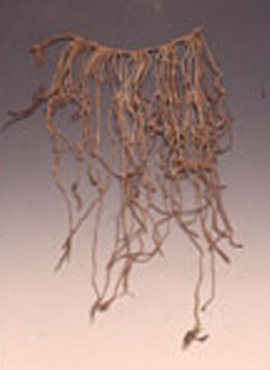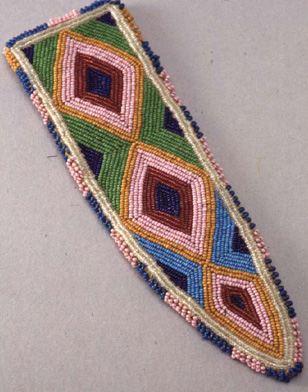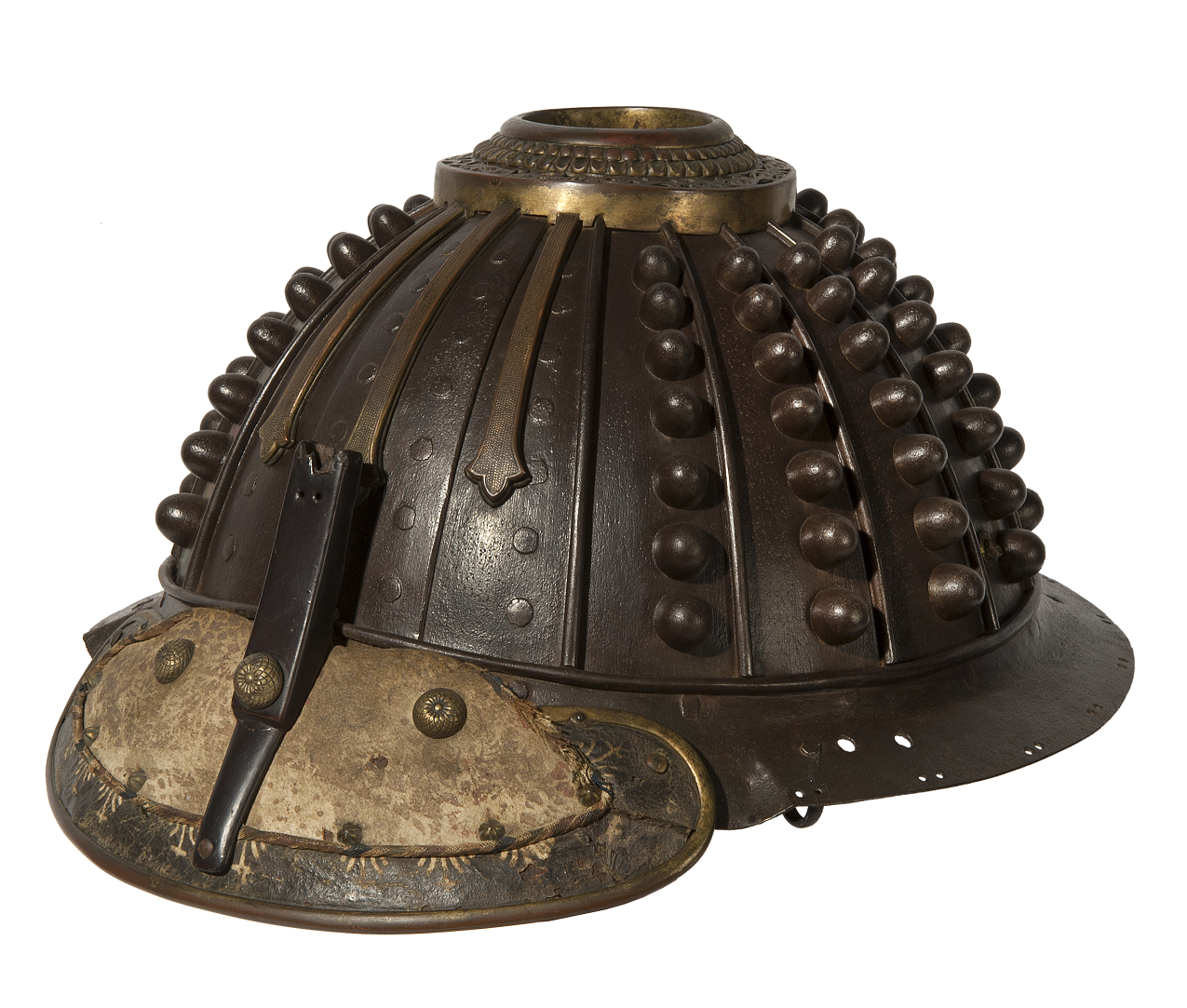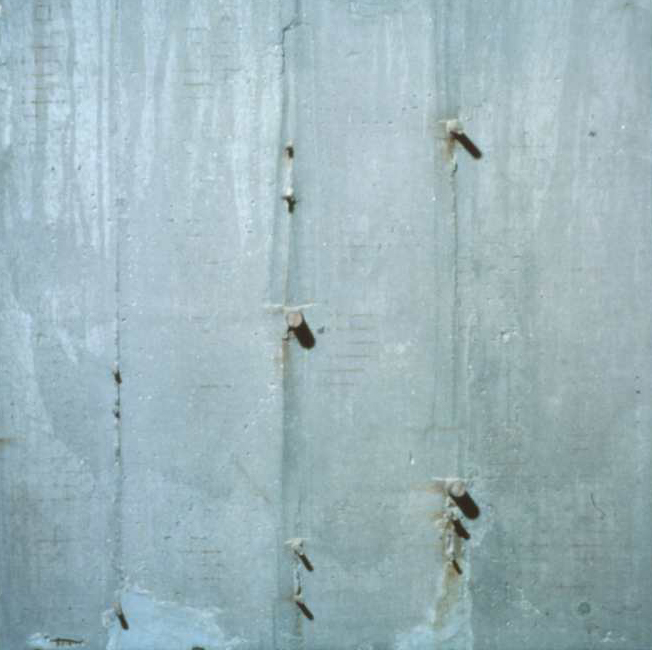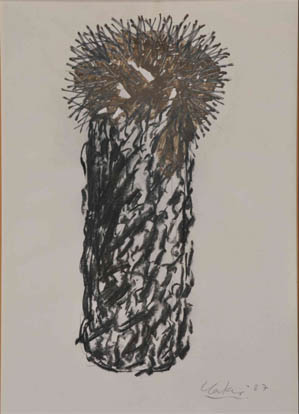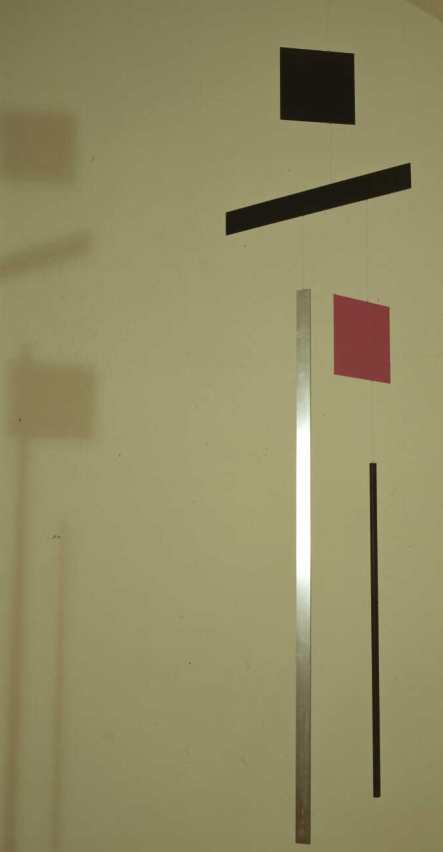
Click here to view image
Useless machine
Maria Cernuschi Ghiringhelli 1990
Munari, Bruno
installation
1947 - 1983 - XX
717
Misure mancanti: MNR
Astrattismo in Italia nella raccolta Cernuschi Ghiringhelli - Villa Croce, Genova - 1985
Bruno Munari was a great experimenter, also in the direction of the applied arts. He started making the first ‘Machines’ in 1933 and in fifteen years designed 93 of them, using techniques derived from the industrial production of serial products. The first works had allusive titles (‘Sensitive Machines’, ‘Machine Breath’), which then turned ironically into ‘Useless Machines’ to emphasise the pure and unique aesthetic function unrelated to any functionality and efficiency. ‘Personally, I thought it would be interesting to free the abstract forms from the static nature of the painting and suspend them in the air, connected to each other so that they would live with us in our environment, sensitive to the true atmosphere of reality’.

